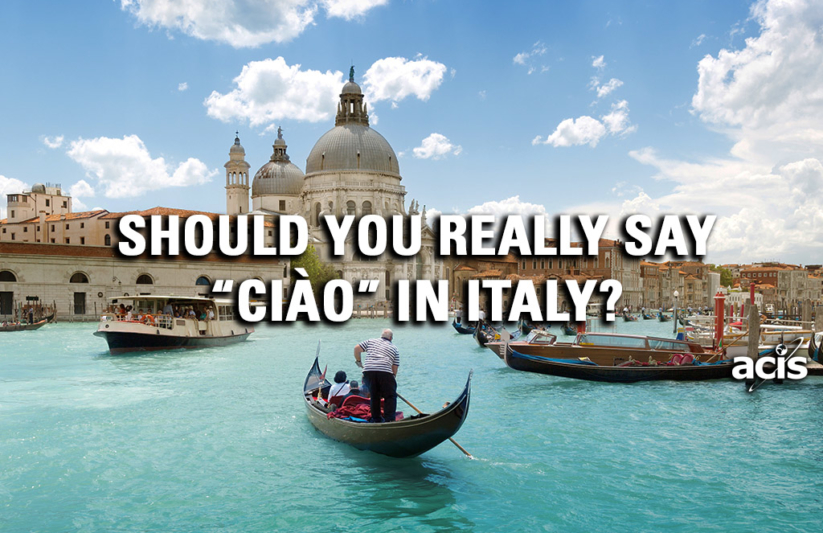Ciào Meaning: Should You Really Say “Ciào” in Italy?

Even if you don’t know a lot of Italian before embarking on your European adventure, chances are you are already familiar with their common greeting: ciào. Often times when we’re learning any language or visiting a foreign country, the first word all travelers want to and need to learn is “hello” and “goodbye.” What’s great about the word ciào is that it does both! In Italian, it’s an informal salutation and meant to be used between friends, people of similar social stature, and to family.
However, historically this Italian greeting did not carry the same friendly connotation that it does today, and its real meaning is probably more interesting than you might think. What most people don’t know is that the word ciào stems from the Venetian dialect arising from the phrase s-ciào vostro, often shortened to just s-ciào, which literally translates to “I am your slave.” In the past, this word was used in its literal sense towards the Slavic people, who were largely employed as slaves in the Mediterranean region. Fortunately, this phrase was not always known to carry such gravity as many Venetians who tossed the word around used it in a way that meant “Let me know if you need anything” or “I am at your service.”
FREE LESSON PLAN
Online Tour of The Roman Forum
6 Latin Classroom Lesson Plans to do with Your Students Based
on the New Bloom’s Taxonomy For World Language Instruction.
It may seem a little uncomfortable that a word like ciào has been accepted into cultures and languages around the globe, but take comfort in the knowledge that few people know about the historical derivation of the word. Fortunately, most of the history surrounding the word has become a thing of the past. Ciào has become so informal (some may argue too informal) that you most likely would never have an issue using this word as a greeting while roaming around Italy. The word has lost most, if not all, of its negative connotation and is one of the most widely accepted greetings in the world!
But why use a word that is so simple and informal? Why not find alternative Italian greetings that are more fun and will enhance your knowledge of the language. Take a stroll around Roman shops and say hello to local shop owners with “salve” (hello, formal/informal). Greet locals on their morning commute to work with a wave and “buon giorno” (good day). Hop out of your gondola ride along the canals of Venice and leave your gondolier with “arrivederci” (goodbye).
When you are traveling, it is always important to do your best to immerse yourself into the culture and language of the place that you are visiting in order to get the most out of your trip. So next time you take a trip to Spain, Italy, Poland, or any other foreign place, do your best to get involved and learn about their culture and way of life in any way possible.
Looking for a way to practice your Italian? Check out our itineraries to Italy!










